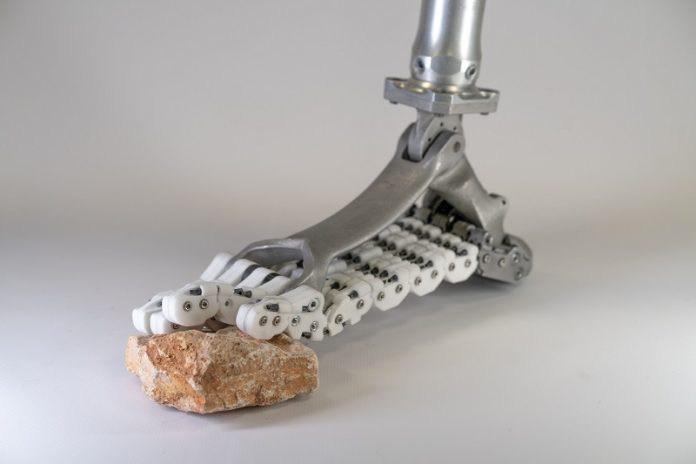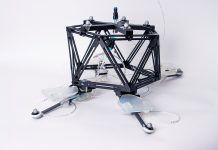
A groundbreaking prosthetic foot, called SoftFoot Pro, has been developed by the Istituto Italiano di Tecnologia (IIT) in Genoa.
This motorless, flexible, and waterproof prosthetic foot is inspired by the human foot’s anatomy and designed to provide better stability on uneven and slippery ground.
SoftFoot Pro is not only a game-changer for people with limb loss but also holds promise for future humanoid robots.
SoftFoot Pro’s innovative design has already earned two international patents, with a third patent under review by the European Patent Office. Its unique ability to adapt to various terrains makes it a valuable tool for prosthetic users and robots that need to maintain balance on challenging surfaces.
The new prosthetic foot was showcased to the public for the first time during the G7 Health track’s Technical Event “Life-long prevention for healthy and active aging” in Genoa. This event, organized by the Italian Ministry of Health in collaboration with IIT, focused on promoting lifelong health and innovation to support active aging.
SoftFoot Pro was also presented to the scientific community at the IEEE International Conference on Robotics and Automation (ICRA 2024) in Yokohama, Japan. Manuel G. Catalano, a researcher at IIT, explained the inspiration behind SoftFoot Pro. He noted that current prostheses and humanoid robots typically have flat or rigid feet, which can limit their ability to adapt to different terrains and positions like kneeling or bending.
In collaboration with Centro E. Piaggio at the University of Pisa, the IIT research team developed SoftFoot Pro to closely mimic the human foot’s shape and function. The prosthetic foot can change its shape, allowing the sole to deform and adapt to the roughness of the terrain, improving stability and the naturalness of the user’s step.
This adaptability enhances the system’s autonomy and management capabilities, making it feel more in tune with the human body’s sensorimotor characteristics.
SoftFoot Pro weighs approximately 450 grams and can support up to 100 kilograms. Its core structure includes a mobile arch mechanism made from titanium or aeronautical-grade aluminum alloy.
Five high-strength plastic chains, designed to simulate the plantar fascia of human feet, connect the arch ends. A high-performance, mechanically inextensible cable runs lengthwise through these chains and connects at the heel.
The chains, made of durable plastic from automotive technologies, are linked by pairs of elastics. This architecture replicates the windlass mechanism found in human feet, which stiffens the plantar fascia to distribute force evenly during walking.
This mechanism is crucial for efficient movement and energy efficiency, especially when negotiating obstacles and during the final phase of a step. The foot’s elastic sole also absorbs 10% to 50% of the impact from walking.
Unlike current rigid prostheses, SoftFoot Pro’s flexible design allows it to mimic natural human foot positions, enabling users to perform everyday actions like bending down to tie a shoe or picking up objects from the ground.
It also improves walking on stairs and other uneven surfaces. Additionally, SoftFoot Pro’s waterproof nature makes it suitable for outdoor use, such as on meadows, beaches, and slippery terrain, eliminating the need for users to switch prostheses for different activities.
SoftFoot Pro has been tested by individuals with unilateral lower limb amputations in collaboration with Hannover Medical School in Germany and the Medical University of Vienna in Austria.
These tests were part of various European projects, including the Natural Bionics project. The prosthetic foot was also successfully tested with the quadruped robot Anymal at the Federal Institute of Technology Zurich in Switzerland and the humanoid robot HRP-4 at the University of Tokyo in Japan.
SoftFoot Pro represents a significant advancement in prosthetic technology, offering a more natural and adaptable solution for people with limb loss and potential applications for future robots.
Its ability to mimic the human gait and improve stability on challenging surfaces makes it a promising innovation in the field of prosthetics and robotics.



